Once players have become acquainted with the different types of bets they can place in roulette, they can turn their attention to the mathematical side of the game. Many casual players ignore this aspect of roulette. However, prior to placing real-money wagers, it is advisable to get a better idea about the odds and probabilities of winning with different types of bets. This will enable players to balance the risks and their potential profits and help them implement a suitable betting strategy to minimise their losses.
Many inexperienced roulette players fail to make a distinction between the concepts of odds and probabilities. Yet, a certain difference exists. Read on to get a better idea what the two terms mean and how you can calculate both the odds and the probabilities of winning with each type of bet in roulette.
What Does the Term “Probability” Mean?
Generally speaking, the term “probability” can be defined as the likelihood that a specific event or outcome will occur. In casino games like roulette, however, the term denotes the likelihood that a given number will come up. When the concept of probability is applied to roulette, it is expressed as “1 out of 37”, for example, or is written down as 1/37, which is the same thing.
When the probability is expressed as a fraction, the first number stands for the expected frequency of a given event occurring. The second number or 37 in our example, represents the overall number of possible outcomes. In European roulette, all 37 numbers have equal chances of coming up. For every straight up bet, there are two possible outcomes – the player either wins or loses. So in this instance, 1 represents the number of ways to win with a straight up bet, while 37 stands for the total number of possible outcomes.
The concept of probability can best be explained by giving the coin-flip as an example. Ask yourselves what is the probability of tails coming up the next time you flip the coin. There are only two possible outcomes of a coin flip – either heads or tails will come up.
In this instance, we are betting that tails will come up so the probability of this happening can be expressed as 1 out of 2, 1 to 2, 1:2 or 1 / 2. To convert the probability of tails coming up into a percentage, one needs to divide the first number of the fraction by the second number. This way we get the following result: 1 / 2 = 0.50 x 100 = 50%. Bear in mind the total number of outcomes includes both the ways to win and the possible ways to lose.
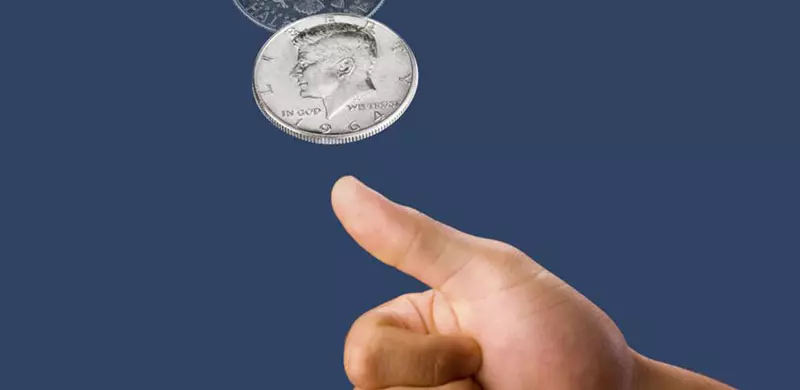
Calculating Probability in Roulette
Naturally, this principle can be applied in the game of roulette as well. Let us assume we are playing the European variation of the game where there are 36 numbered pockets on the wheel plus a single-zero pocket. This makes for a total of 37 possible outcomes on any given spin of the wheel. You want to place a straight up bet on an individual number, number 16, for example. But before you put your money on stake, you want to figure out what the probability of number 16 coming up on the next spin of the wheel is.
A seasoned gambler would say the probability of 16 winning is 1 to 37. And indeed it is, but we want to convert it to a percentage. We divide the number of ways to win by the number of all possible outcomes and get the following: 1 / 37 = 0.0270. Then, we multiply the decimal number by 100 and the result is: 0.0270 x 100 = 2.70. It turns out the probability of you winning with a straight up bet on number 16 is 2.70%.
The formula can be used to calculate the probability of winning all roulette bets. Let’s provide another example with an even-money bet. Assume you want to place an even-money bet on Red. As we know, there are 18 red and 18 black pockets on the wheel, plus the single-zero pocket. This makes for 18 ways to win out of 37 possible outcomes. The calculation will go as follows: 18 / 37 = 0.4864 x 100 = 48.64%. Many inexperienced players wrongfully assume they have equal chances of winning and losing with even-money bets, but apparently this is not so. The reason lies in the single-zero pocket which gives the house its edge.
Let us finish with one last example and assume you wish to place a corner bet on numbers 7, 8, 10 and 11. This way, you will have 4 ways to win out of 37 possible outcomes. The calculation in this case will be: 4 / 37 = 0.1081 x 100 = 10.81%. Not too shabby, especially when compared to your chances of winning with a straight up bet.
| European Roulette House Edge and Payout | |||
|---|---|---|---|
| Bet Type | Bet Payout | Bet Probability | House Edge |
| Straight | 35/1 | 2.70% | 2.70% |
| Split | 17/1 | 5.41% | 2.70% |
| Street | 11/1 | 8.11% | 2.70% |
| Square or Corner | 8/1 | 10.81% | 2.70% |
| Six Line | 5/1 | 16.2% | 2.70% |
| Column | 2/1 | 32.4% | 2.70% |
| Dozen | 2/1 | 32.4% | 2.70% |
| Red / Black | 1/1 | 48.64% | 2.70% |
| Odd / Even | 1/1 | 48.64% | 2.70% |
| High / Low | 1/1 | 48.64% | 2.70% |
| American Roulette House Edge and Payout | |||
|---|---|---|---|
| Bet Type | Bet Payout | Bet Probability | House Edge |
| Straight | 35/1 | 2.63% | 5.26% |
| Split | 17/1 | 5.26% | 5.26% |
| Street | 11/1 | 7.89% | 5.26% |
| Square or Corner | 8/1 | 10.53% | 5.26% |
| Five Line | 6/1 | 13.16% | 7.89% |
| Six Line | 5/1 | 15.79% | 5.26% |
| Column | 2/1 | 31.58% | 5.26% |
| Dozen | 2/1 | 31.58% | 5.26% |
| Red / Black | 1/1 | 46.37% | 5.26% |
| Odd / Even | 1/1 | 46.37% | 5.26% |
| High / Low | 1/1 | 46.37% | 5.26% |
| French Roulette House Edge and Payout * | |||
|---|---|---|---|
| Bet Type | Bet Payout | Bet Probability | House Edge |
| Straight | 35/1 | 2.70% | 2.70% |
| Split | 17/1 | 5.41% | 2.70% |
| Street | 11/1 | 8.11% | 2.70% |
| Trio (0,1,2 / 0,2,3) | 11/1 | 8.11% | 2.70% |
| Four-Number (0,1,2,3) | 8/1 | 10.81% | 2.70% |
| Square or Corner | 8/1 | 10.81% | 2.70% |
| Six Line | 5/1 | 16.2% | 2.70% |
| Column | 2/1 | 32.4% | 2.70% |
| Dozen (P12, M12, D12) | 2/1 | 32.4% | 2.70% |
| Red / Black | 1/1 | 48.64% | 2.70% |
| Impair (Odd) / Pair (Even) | 1/1 | 48.64% | 2.70% |
| Manque (Low) / Passe (High) | 1/1 | 48.64% | 2.70% |
* In French roulette, when even money bets are placed and the ball ends up in the zero pocket, only half of the bet is returned to the player. This is known as the “half-black” or “en prison” rule and reduces the house edge for even money bets to 1.35%.
Odds and Probabilities
Low Limits Roulette
High Stakes Roulette
American Roulette
European Roulette
What Does the Term “Odds” Mean?
Casual players make the mistake to assume “odds” and “probabilities” are two interchangeable terms. They are not. The term “odds” refers to the likelihood of a specific outcome to occur compared to the likelihood of the same outcome not occurring.
Similarly to probabilities, odds, too, can be expressed as two numbers in a specific ratio. In this case, the first number stands for the expected frequency of a given outcome occurring. The second number represents the number of the remaining possible outcomes and excludes that first specific outcome.
Let us now go back to our coin-flip example. This time, you decide to bet on heads and the only other option you have is tails. The odds of heads coming up the next time you flip the coin can be expressed as 1 to 1, 1:1 or 1/1. One important thing to remember is that probabilities can be expressed as both percentages and ratios, while odds are only expressed as ratios.
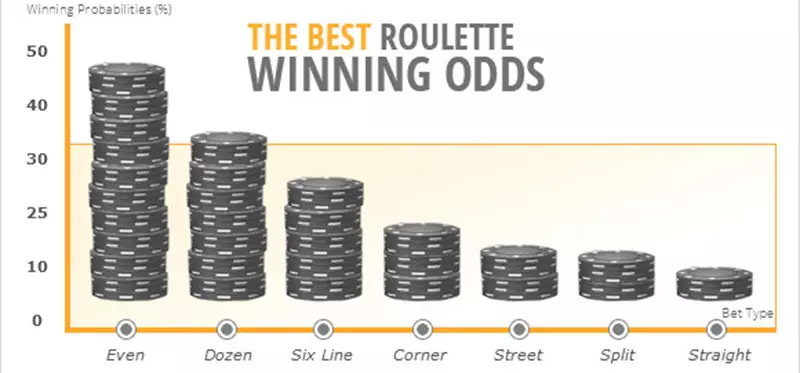
Calculating the Odds
Now, let us return to the game of European roulette. You are still considering placing a straight up bet on the number 16 and are wondering what are the odds of this particular number showing up when the ball loses momentum and comes to a stop.
With straight up bets there is only 1 way to win and 36 ways to lose. So, the odds of your number coming up can be expressed as 1 to 36 or 1:36. It is worth mentioning the odds can be represented in reverse, for example 36:1, which is confusing to some. Nevertheless, the ratio still indicates there are 36 ways to lose with a straight bet and only one way to win. Similarly, the odds of winning with an even-money bet are represented by the ratio 18:19, while the odds of losing can be shown as 19:18.
It is important to mention these are the true odds which represent the actual possibility of winning and losing with your bets in roulette. However, the casino will not pay off your winnings on the basis of the true odds. Winning straight up bets are paid off at odds of 1:35, while even-money wagers are paid out at odds of 1:1 (or 18:18) even though players’ chances of winning and losing are not 100% equal because of the single-zero pocket on the European roulette wheel. To calculate the house edge, players can divide the number of ways to win by the overall number of possible outcomes. In this case the result will be the following: 1 / 37 = 0.0270 x 100 = 2.70%.
In European roulette, the house has one unit of profit, while in American roulette where there are 38 pockets, the casino collects two units of profit per each winning straight up bet.
True Odds and House Odds
The calculations we already made will help gambling enthusiasts to figure out what their actual chances of winning or losing will be. As it seems, many players, including some old hands, are not aware that house odds are the inverse of winning odds.
It is important to note that if you are looking to enjoy a fruitful roulette betting session, the true casino odds and the probability of winning should not be the only information to take into consideration.
While making up their minds about the wager they are about to make, casino enthusiasts should be guided also by the rewards they can potentially bag if their wager is settled as a winning one.
What roulette fans should not forget is that the higher the chances of winning are, the smaller the payoffs will be and vice versa, the lower the chances of winning are, the heftier the payouts will be.
Remember that the payoffs that are introduced on winning stakes are reduced and are not based on the true odds against winning. In other words, casinos guarantee themselves consistent profit by paying players less than they should actually do.
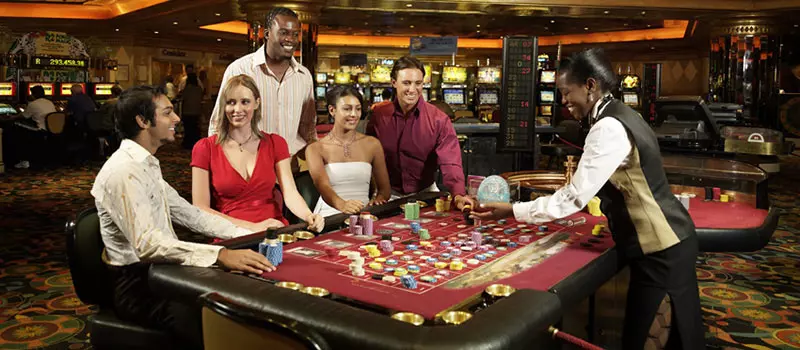
Let’s pay attention to Straight bets for which the odds against winning are 36 to 1, while casino odds are 35 to 1. As likely as not, at this point, many of you think that the difference is of minor importance, but you should take into account the fact that if you intend on spending more time betting on roulette, the difference will become much more pronounced. What players should remember is that casinos, be it land-based or interactive ones will invariably bet against you, and will always take their cut.
In spite of the fact that the value of the true and the casino odds come exceptionally close, they will never coincide as casino odds will invariably be lower. Perhaps, most people are familiar with the expression that “the house always wins”, and now you know why this is true.
Therefore, players should keep their eyes wide open for wagers where the casino odds come as close to the true odds as possible due to the fact that in such cases, the casino advantage will be on the lower end of the spectrum.
We needed to draw a line between true and casino odds in order to make sure that players will be capable of telling how casinos gain their edge over their customers.
Roulette and Randomness
While polishing up their knowledge about the game of roulette, gambling enthusiasts should also get acquainted with the concept of randomness. In the perfect world, roulette wheels are designed in such a way so as to guarantee that the outcome of the next spin cannot be influenced in any way, thus remaining unforeseeable and entirely random.
Apparently, many roulette players do not have a proper knowledge of randomness, which comes to explain why they struggle to determine the probability of a specific outcome to take place. One of the most intelligible descriptions of randomness is that the outcomes will be unpredictable, provided that one item of a set is just as likely to be chosen as the rest of the items of that same set.
When roulette is concerned, it will be impossible for gambling enthusiasts to tell for sure which of the numbers 0 through 36 will become a winning one next time the wheel is spun.
Therefore, a process or any spin of the roulette wheel will be truly random, on condition that the outcomes of the foregoing spins do not have an impact on the spins that are about to come. In spite of the fact that this is exactly what casino operators are looking to guarantee, from time to time, some wheels might show a bias.
What this means is that the outcomes deviate from the truly random ones. Sometimes, this deviation might be because casino operators want to rig the wheel, but on other occasions, the bias of the roulette wheel can be caused by certain physical imperfections that make it favor certain sectors or numbers.
Single and Double-zero Roulette Odds and Payouts Comparison
There is no denying that roulette is one of the most enthralling casino games for players with years of experience and for those who are total novices to the casino floors.
What seems to be slightly challenging for players at first is the extensive variety of betting options they can pick and choose from. As gambling aficionados might be already aware, there are wager types that allow them to bet on one specific number, set of numbers, on red, black, even, and odd numbers, among others.
In this section, we will draw a line between the wager types players can opt for when betting on European and American roulette, and will elaborate on what the odds and the payouts are.
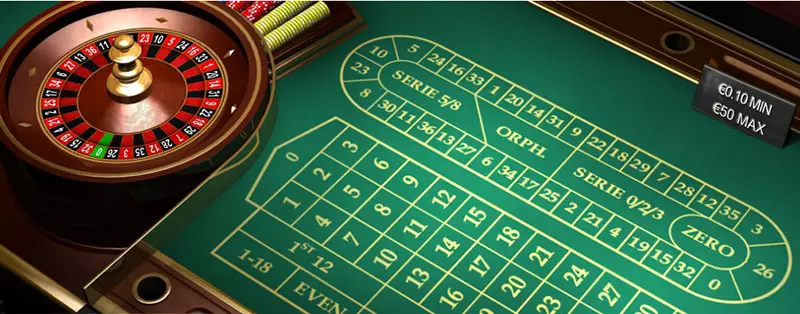
Straight Bets
First off, no matter if the roulette variant you have picked is a single-zero one or it has an additional zero pocket, in both cases, you will be allowed to opt for a Straight bet. This is a bet that can be made on just about any number, and as players might expect, the odds will vary across the different roulette variants.
When European roulette is concerned, the odds are 2.70%, while in American roulette, they are 2.63%. Another vital thing that deserves the attention of players is that the true odds for such bets are 36:1 and 37:1 respectively, but winning Straight bets award payoffs of 35:1, no matter the chosen variation.
Split Bets
Split bets are wagers that are made on two numbers at the same time. The payoffs winning Split bets award are 17:1. The American roulette odds are 5.26%, while the European are 5.40%. In the first case, the true casino odds are 18:1, while in the second, they are 17.5:1.
Street Bets
Street bets are laid on three numbers simultaneously. Winning Street bets introduce payoffs of 11:1. With American roulette, the odds are 7.89%, while with the single-zero variants, the odds are 8.1%. Yet, the true casino odds in the first case are 11.67:1, while with the single-zero roulette variants, they standt at 11.33:1.
Corner Bets
Corner bets are placed on four numbers simultaneously, and if they are settled as winning ones, the provided payoffs will be 8:1. The odds in European roulette are 10.80%, while in American roulette they are 10.53%. When true casino odds are concerned, in the single-zero variant, they are 8.25:1, and in American roulette, they are 8.5:1.
Basket Bets
Available solely in American roulette, winning Basket bets give a payoff of 6:1. This time, the odds are 13.16%, while the true odds are 6.6:1.
Line Bets
Line bets are a type of roulette wagers that are placed on a combination of six numbers. If settled as winning ones, Line bets award payoffs of 5:1. With Line bets, the American odds are 15.79%, while the European are 16.2%. Yet, the true odds are 5.33:1 and 5.167:1 respectively.
Column Bets
When players go for a Column bet, they are allowed to bet that the winning number will belong to one out of the three vertical columns, and a correct pick makes for a payout of 2:1. With Column bets, American odds are 31.60%, while the European odds are 32.40%. Still, when true casino odds are concerned, they are 2.167:1 on American roulette, and 2.083:1 on European and French roulette.
Dozen Bets
While betting on roulette, players are permitted to wager on the numbers 1 through 12, 13 through 24, and 25 through 36. If players have made a correct pick, the payoff they will be granted is 2:1. With Dozen bets, the American odds are 31.58%, while the European odds are 32.40%. The true casino odds, however, are 2.083:1 for single-zero roulette variants and 2.167:1 for double-zero ones.
Red or Black Bets
As can be expected from the name, going for this wager type will allow you to guess if the next winning number will be black or red. Winning Red or Black bets pay even money, and the odds on American roulette are 46.37%, while the odds on European roulette are 48.60%. With single-zero roulette versions, the true casino odds are 1.056:1, while with American roulette, they are 1.11:1.
High or Low
This roulette wager allows gambling enthusiasts to bet if the next winning number will belong to the category of the low numbers or the ones between 1 and 18 or the high numbers, or the ones between 18 and 36. Naturally, such bets pay even money, and the odds are once again 46.37% and 48.60%. The true odds are identical with the above-mentioned bets too.
Odd or Even Bets
With Odd or Even bets, players will try to guess if the winning number will be odd or even. The American odds are 46.37%, while the European are 48.60%. As was the case with the above-mentioned wagers, Odd or Even bets also pay 1:1. Yet, the true chances of making a winning Odd or Even bet are 1.056:1 when single-zero roulette variations are concerned, and 1.11:1 for double-zero roulette variants.
Probabilities and Payouts of Call Bets
Call bets are one more type of roulette wagers, but their availability is limited exclusively to single-zero roulette variations. What should be noted about these wagers is that the numbers they comprise are combined depending on the position they take on the roulette wheel, and not the betting layout.
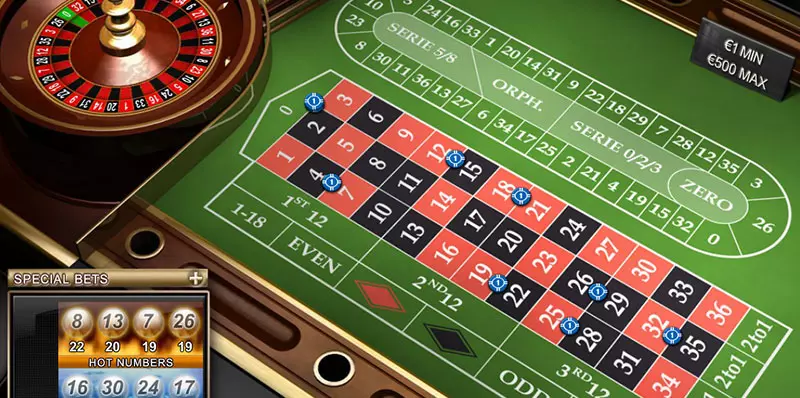
Neighbours of Zero
This is a call bet that comprises all 17 numbers that lay near the zero. To place this bet, gambling enthusiasts will need a total of 9 chips, and the payoff they will be granted if their bet wins depends on the number that has hit. The odds of Neighbours of the Zero bet are 45.9%.
Third of the Wheel
This wager covers the 12 numbers that lay on the opposite side of the numbers that are incorporated into Neighbours of Zero. Тhis time, the payouts are fixed and stand at 17:1, while the odds of winning are 32.4%.
Zero Game
This bet type bears much resemblance with Neighbours of the Zero due to the fact that it also covers numbers that are close to the zero, but this time, they are only 7. While the payoffs for such wagers are 26:1, the odds of winning stand at 18.9%.
Orphelins Bets
Such bets require a total of five chips and cover numbers that lay on the opposite sides of the roulette wheel. With such bets, the odds are 21.6%, while the payoff will be 35:1 for the wager made on a single number, and 17:1 for the splits.
Neighbour Bets
Neighbour bets are placed on one number chosen by the player, and four more numbers that stand on both sides of that number. The odds of winning will be 13.50%.
Final Bets
A Final bet is roulette wager that is made on all numbers the end digits of which are the same. The number of chips players will need so as to place such a wager depends on the chosen number and can be three or four. It should be noted that the odds are determined by the chosen digit, and will be either 8.10% or 10.80%.
Odds of the Same Number Appearing in Successive Rounds
Often when roulette variations are providing statistics, they will show “hot” numbers that have previously won. Although one could base their next bet on the results from preceding roulette spins, it should be noted that the odds of the same number appearing twice in a short period of time are not exceptionally high, especially if we are talking about landing the same number in two or more consecutive rounds.
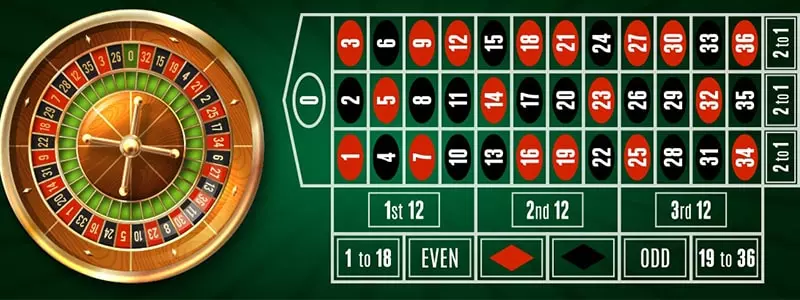
The probability of the roulette ball landing on the same number in successive spins also depends on the roulette variation that is played. While the odds of a single number appearing in European roulette is 1 to 37, in American roulette the probability is 1 to 38 due to the additional wheel section. When it comes to the same number landing two or more consecutive times, however, the chances are much slimmer.
Back in 1959, a record number of wins with the same number was achieved at the El San Chuan hotel in Puerto Rico. At that time, a game of American Roulette had the number ten appear six consecutive times. To calculate the probability of such an event happening, we simply multiply the probability of each of the six individual events.
In the case of the ball landing on the same number six successive times, we will simply multiply (1/38) x (1/38) x (1/38) x (1/38) x (1/38) x (1/38). The result is showing that the probability of that happening is roughly around three billionths.
The example above is answering the question about the probability of the same number landing six consecutive times. If we are, however, curious about the probability of the result of the previous spin to repeat on the next spin, the answer will be 1/38 for American roulette and 1/37 for European roulette. This is the so-called simple event and expresses the probability of any of the roulette numbers landing two consecutive times.
Landing the same colour on successive spins is also possible, with a record of the red colour landing 32 consecutive times recorded in 1943. Here, we can get the probability of such an event happening by multiplying the probability of each of the 32 events happening, ending up with a very low probability of (18/37)32 = 0.000000000096886885. If we are playing American roulette, the probability is even lower as we add another section to the roulette wheel.
Things to Consider When Picking a Roulette Wager
Once players are aware of the true and casino odds of all roulette bets, it will be much easier for them to find the right approach for betting on the game, which will therefore help them build a proper betting strategy.
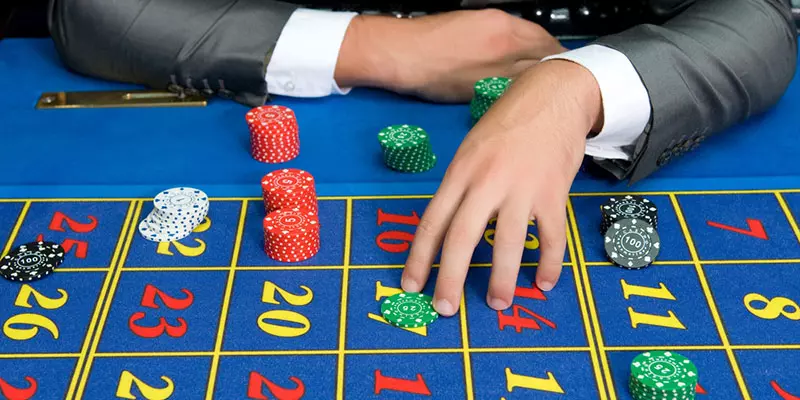
One of the most essential things roulette fans should pay attention to are the odds of the chosen bet type. Gambling enthusiasts should be mindful of the fact that the chances of making a Straight-up bet are the smallest, which is the reason why they should not get carried away by the heftier payoffs such bets provide.
Roulette bets the likes of Red or Black and Odd or Event award smaller payouts when compared to Straight bets as they offer even money. Yet, gambling enthusiasts will stand a much better chance to bag a payoff if they go for any of these wager types. No matter that the rewards you will collect will not be that staggering, going for wagers that cover larger groups of numbers might be a much more advantageous approach as in this way, you will be more likely to get a profit more often.
One more thing avid casino fans should remember is that opting for single-zero roulette variants is recommended for the simple reason that the odds of winning will be slightly better in comparison with the ones offered on American roulette.